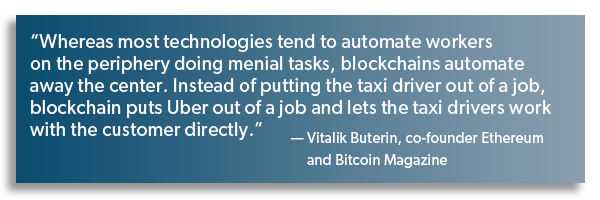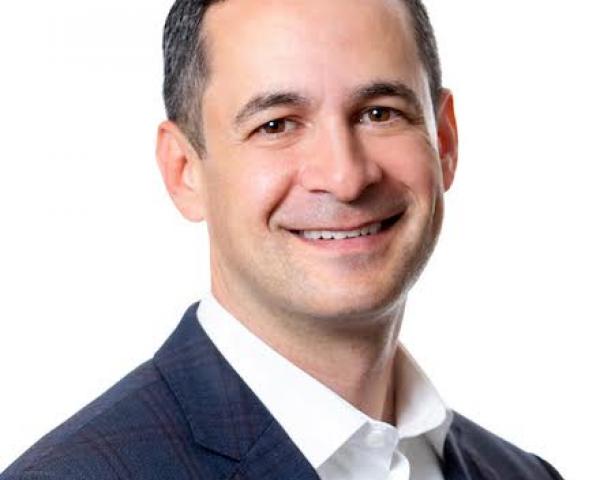Organizations in every corner of the economy are focusing with renewed intensity on innovating to anticipate and meet new customer expectations accelerated by and arising from the pandemic. We are not going back to the way things were pre-2020. The pressure is on to transform business models from top to bottom and acknowledge that innovation, far from being "cool stuff" or an off-to-the-side, not-always-measurable set of activities, is core to any business's strategy in this rapidly changing, unpredictable world.
CFOs, by virtue of their role in an organization, their platform and their relationship to the board, the CEO, and their C-suite colleagues, are uniquely positioned to enable innovation. Their ability to lead at this moment may be vital to their business's future.
This article presents recommendations on what they can do to enable the innovation agenda and how to ensure their actions translate into results.
Defining "innovation" — a word that sparks admiration and controversy
The word "innovation" can be polarizing. It conjures up coolness and threat, inevitability and unpredictability, attraction and avoidance. Few will debate that innovation is essential — yet attempts fail more often than they succeed and can be easily derailed by the status quo.
Innovations are viable new offerings that solve people's real problems; ie, they:
- Can be executed and delivered — technically, legally, ethically, financially, operationally, etc.
- May be new to a segment, geography, industry sector or even the world.
- May be incremental — enhancing an existing business, product, service, experience, etc. — or game-changing.
- Address actual needs of the people a business wants to serve, whether the business has a business-to-business or business-to-consumer focus.
- Exist in many forms as illustrated by the 10 Types of Innovation model created by the Doblin Group. In its research, Doblin has found that innovations tend to be least effective when focused solely on product and most effective when combining five or more of the 10 types. For example, consider how Ikea has combined innovating the brand, customer experience, product, business model and processes, or how Zappos innovates the brand, customer experience, channel, product assortment and business model — in both cases creating unique positions in the market and in the minds of their customers.
Where is the CFO's leverage to enable innovation?
The CFO can accelerate innovation progress, energize the organization and signal culture change by taking action in three areas:
Ensure that adequate resources are allocated to innovation
Innovations don't generally happen within the confines of the annual planning cycle. Innovation can feel messy relative to the structures most businesses follow around budgeting, forecasting and planning. It's driven by the marketplace, by customers' expectations and, as the world experienced last year, by events beyond our control.
Consider good practices that create flexibility and support financial management requirements for innovation. For example:
- Challenge teams coming forward with innovation proposals to see themselves as founders, who self-fund the very first steps before seeking outside capital. Good founders gather qualitative, directionally meaningful customer feedback and develop rough prototypes for proof-of-concept purposes on shoestring budgets.
- Borrow from the startup playbook by funding early-stage concept development in incremental tranches, investing relatively small amounts of capital as milestones are met. Plan a research and development line into the budget so that these investments are accounted for, and anticipate larger investments when it is time to scale.
- Value and consider each innovation initiative as an item in the investment portfolio the business is creating to ensure the company's future. Each investment will have a different degree of risk and reward and likelihood of success and will pay off at a different time. We know that a balanced portfolio mitigates risk and also bakes in the reality that not all portfolio items will succeed or succeed to the same degree or at the same time. Expect that many projects will yield learning and fail to reach commercial success but create value insofar as they can inform future efforts or may be "version 1.0" renditions that require further iteration or time, so should not be discarded. Mapping the portfolio initiatives on a matrix will help confirm whether the mix is right, too aggressive or too conservative relative to the company's strategy and goals.
See also: How to Understand Shopping Behaviors
Develop policies and processes that facilitate innovation
Some years back, my team wanted to run a test in partnership with a startup company whose advanced technology could enable exceptional delivery of critical elements of the customer experience, overcoming a significant barrier that business-as-usual solutions had not addressed.
The project manager set off through the standard approval process, starting with contacting the procurement team. I received a call one day from the procurement specialist, who told me, "We cannot work with this vendor because, according to their [Dun & Bradstreet] report, they lose money."
No kidding. This was an early-stage startup (which, incidentally, ended up with a $300 million-plus exit a few years later that we never could have foreseen). As is typical of early-stage businesses, this startup was losing money — capital had been invested in building a world-class platform, and the sales pipeline was not close to maturing.
By the standards of a scale business operating in a highly regulated sector, integrating a capability from a money-losing provider would not be acceptable. But in the case of a low-volume test of a new capability whose functionality is not core to the safety and soundness of the enterprise, the risks are different, and so are the mitigation strategies. In this case, we articulated up-front a clear exit plan, including what we would communicate to customers involved in the pilot; acknowledged that the pilot investment would be written off; and had a clear plan to account for a write-off in our financials.
Applying policies and processes that work well for a scale operation can be overkill for a nascent concept. Innovation requires a different approach with rigor appropriate to the task, risk and capital involved.
What can the CFO do to cultivate innovation-appropriate policies and processes?
- Help C-suite colleagues and the finance team focus on asking the question, "What is the problem we are trying to solve?" in assessing next steps for a new concept.
- Ensure relevant processes are in place to assess and approve innovation vendors and other strategic decisions that both enable experimentation and address the need to protect the enterprise.
Adopt relevant metrics
Early in my corporate career, when I was on a team seeking seed funding for a new concept, an executive offered valuable advice that has stuck with me. In a presentation to this particular executive, the team shared copious financial analyses, including five years' worth of P&Ls carried out to the penny. He waved aside our spreadsheets and, laughing, told us, "Don't seek a level of precision that cannot be possible when you are looking at something so new."
Instead, the CFO can lead the adoption of common-sense approaches to ensure discipline — the right kind of discipline — for evaluating and monitoring emerging business models.
When measuring innovation effectiveness, what is most important is to ask the right questions, be confident in relying on judgment where facts simply do not exist, seek metaphors from other sectors or markets and accept good enough data that can be refined along the way.
Smart questions answered in fast test-and-learn cycles can help a team to derive the relevant metrics and keep innovation projects moving closer to success, or to the set-aside pile.
There is comfort in hard data. It is reassuring to see numbers in organized columns and rows with optimistic trends demonstrating success. But innovation is messy, and it's vital to explore, listen and dig into qualitative insights that could be important signals that are just too raw to quantify.
What can the CFO do to succeed as an innovation enabler?
The CFO role is evolving, and, for people pursuing careers that include even a stint in the finance function, this is an exciting time to make an expanded contribution to their company, leveraging the unique positioning and attributes of their roles. Address these four priorities to support this evolution:
- Step up to the broader role, acknowledging the opportunities beyond traditional reporting, budgeting and forecasting responsibilities and how critical this scope is to the business's future.
- Update the talent strategy for the finance function, in particular by recruiting diverse team members and encouraging the strengthening of skills in customer insight, data analytics and trend analysis that will enable them to be productive and highly valued thought partners to colleagues working on innovation initiatives.
- Assess and augment the capabilities the function needs to perform effectively now, particularly technology capabilities that allow ready access to useable data and support the team's ability to get from data to insight to action.
- Find the right balance between shareholder requirements and those of the other stakeholders to the business — customers, vendors, partners, employees, regulators and the broader community.
CFOs must embrace the reality that, to be an innovation enabler, they will need to make "and" decisions, not "either/or" choices. They will be faced with polarities. To identify, shape, test, launch and scale innovations requires financial management approaches that may feel at odds with traditional ways of operating. But the adoption of fit-for-innovation methods is essential to nurturing ideas and allowing them to grow into commercial successes.
The pros and cons of appointing a chief innovation officer
As a two-time former corporate chief innovation officer, I am often asked, "Is it a good idea to have a chief innovation officer?" Here's the not-so-simple answer:
- Innovation happens with skills, leadership and a mindset that are quite different from those that drive a mature business at scale. The benefits of a C-suite innovation executive with the authority to hire and lead a small team are that this team, properly built, can seed those complementary skills and capabilities, and the role can be a powerful signal to the organization that innovation is a priority.
- The downside is that innovation does not happen in a silo and will benefit from the capabilities and institutional knowledge of the organization at large. A separate team can send a false signal to the rest of the organization that the accountability rests in the team, when in fact everyone should feel they have skin in the innovation game.
The CFO is well-positioned to advocate for innovation governance that engages the entire C-suite and:
- Holds business unit heads and functional experts accountable for contributing to the innovation team's success;
- Encourages collaboration and pooling of expertise needed to advance concepts before they warrant dedicated staffing; and
- Helps ensure that innovation priorities and corporate strategy are connected.
See also: Tapping Cloud’s Ability to Drive Innovation
What to ask first
Top questions for establishing innovation metrics for early-stage concepts include:
- How big is the addressable market?
- What would you have to believe for this to be a concept worth pursuing? In the absence of a rear-view mirror's worth of history, it's better to look forward and envision market, customer, operational and other basics that would need to exist for a concept to appear reasonable.
- What appear to be the likely key drivers of revenue, expenses and the balance sheet?
- What is the unit profit model, and what is the potential to scale?














































